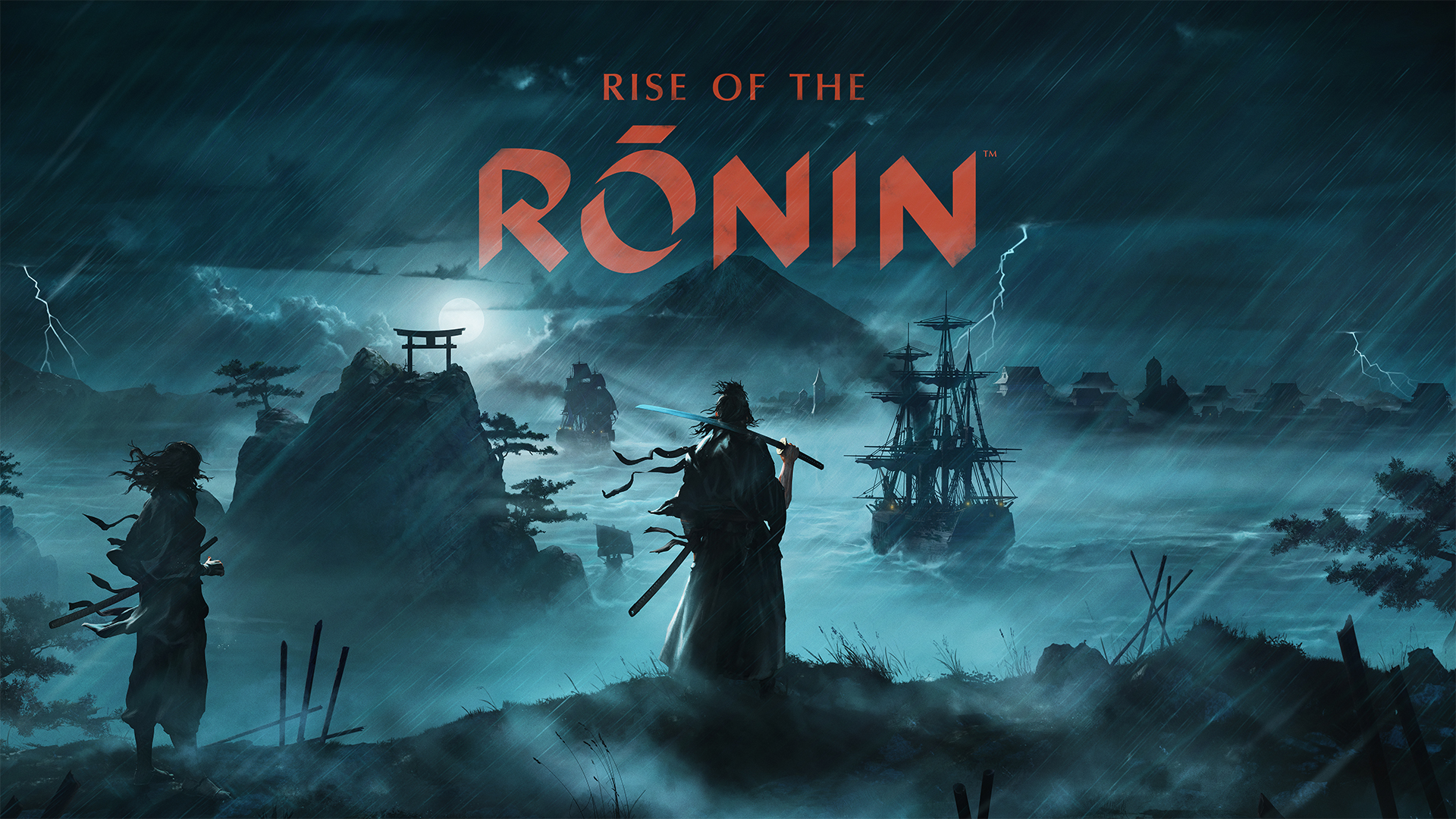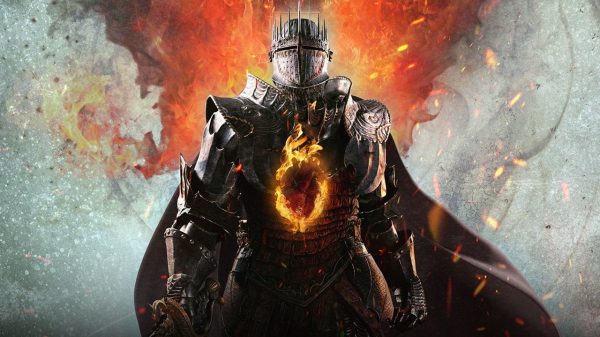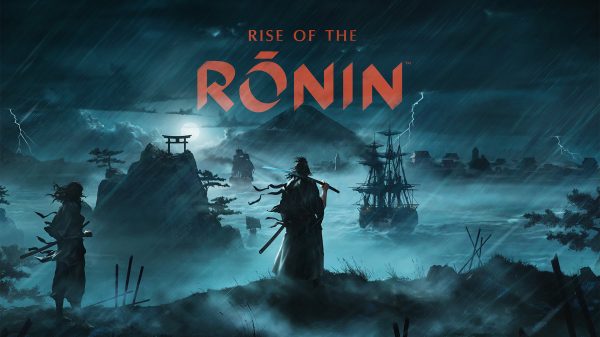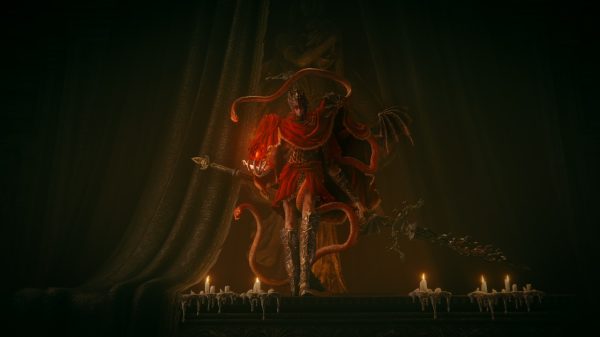I’ve said it before, but Nioh 2 is one of but a handful of titles that has successfully imitated the vaunted Soulsborne games while simultaneously establishing a unique aesthetic, dynamic and flavour all of its own. Indeed, Team Ninja is no stranger to greatness, being the team behind the iconic Ninja Gaiden (and Dead or Alive Xtreme Beach Volleyball if that’s your jam), but with the more recent muted releases of Strangers of Paradise: Final Fantasy Origin and Wo Long: Fallen Dynasty, I feel Team Ninja hasn’t quite managed to recapture the highs of its bigger successes. Unfortunately, Rise of the Rōnin continues that downward trend, committing a litany of open-world sins and failing to deliver the tight and interesting combat mechanics Team Ninja is widely known for.
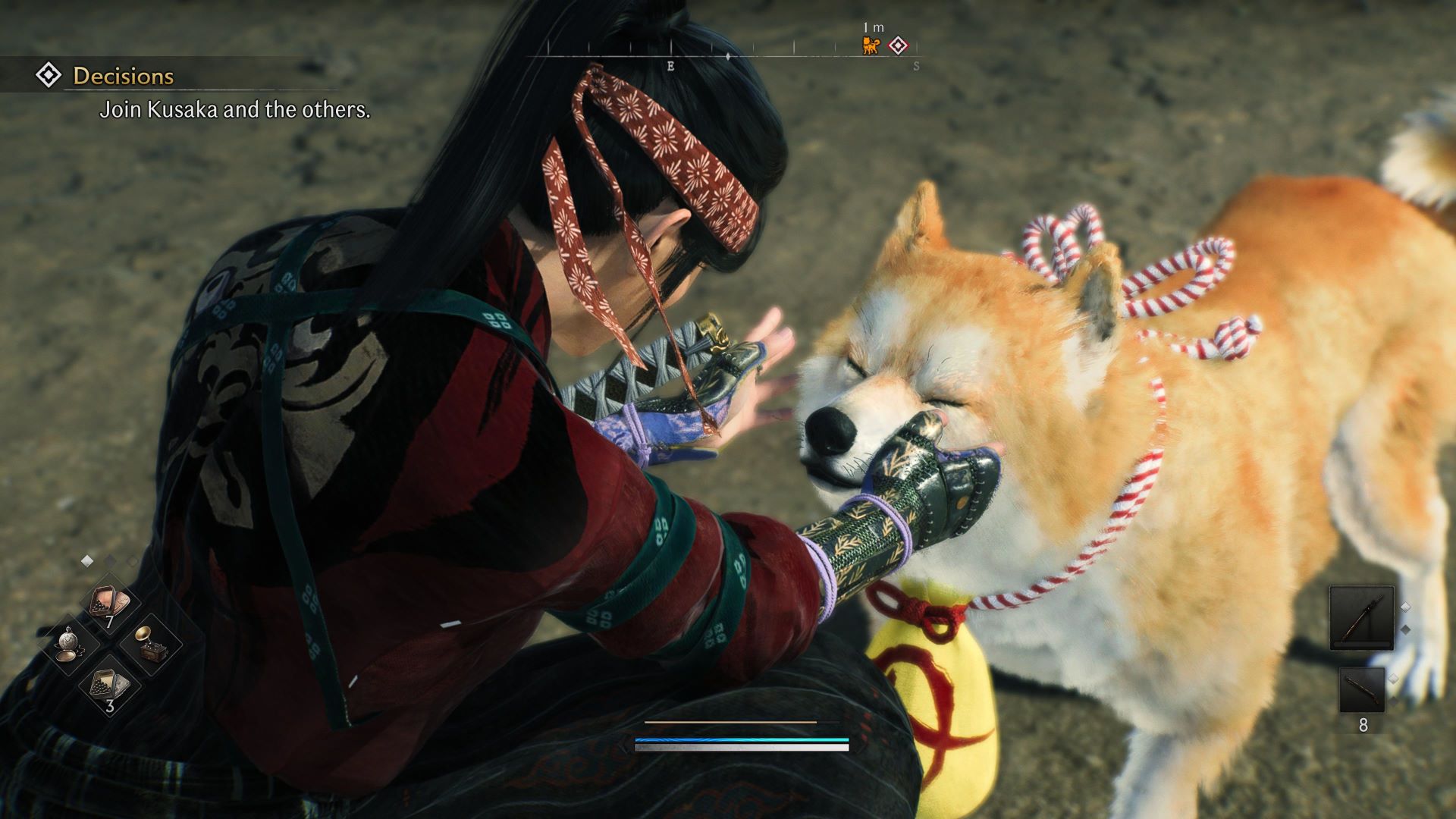
Go fetch me some memes and cryptocurrency, beast
Rise of the Rōnin takes place in 19th-century Japan, at the tumultuous end of the Edo period. This period was marked by enhanced volumes of trading with an increasingly influential United States, and with new trading partners came new technologies, new ideologies, and new ways of waging war. Tension between the ruling shogunate government and the general populous were exacerbated by indecisions on how to preserve identity and autonomy in the face of foreign powers that were slowly transforming the face of modern Japan. This complex epoch also marked the eventual death of the warrior samurai, a period extremely well represented by art and film in almost every conceivable medium.
As a child, the fate of our protagonist and their sibling are forged in the fires of the Boshin War. Saved by a samurai warrior of a mysterious clan known as the Veiled Edge while their village is being burned to the ground, you and your sibling are inducted into their number as Blade Twins. Blade Twins are linked soul-to-soul by fate and train in pairs to hone their skills. Alone they are deadly warriors, together they are an unstoppable force of nature. Now all grown up (it happens so fast), our pair of Blade Twins find themselves separated during a mission on a US merchant ship, with one mortally wounded and the other fleeing for their life to report back to the Veiled Edge. The paths the Blade Twins are fated to take diverge wildly at this point, but their destinies guarantee that their paths will most certainly cross again.
There’s probably a lot to love here for Japanese history buffs, although significant poetic licence is taken with historical periods and characters to support the Blade Twin arc. Personally though, I feel the narrative spreads itself extremely thin, introducing dozens of characters and events in a blurry mix that is hard to follow. It really is as dense as a neutron star in a hydraulic press, and I never really felt any allegiance to the pro or anti-shogunate factions (and your decisions in this regard actually have very large impacts on the course of events) that competed for dominance amongst the social upheaval. I found the concept of the Blade Twins to be far more interesting and relatable, and it could have been a strong unifying thread that anchored the narrative, but for much of the game that particular arc is simply forgotten or reintroduced in head scratching ways that fail to deliver the impactful drama the game is going for. There’s a lack of urgency to reuniting with your Blade Twin and finding up what they’ve been up to since being separated from you, and this is even more keenly felt due to Team Ninja’s pivot to an open-world design and the natural lack of focus that tends to bring.
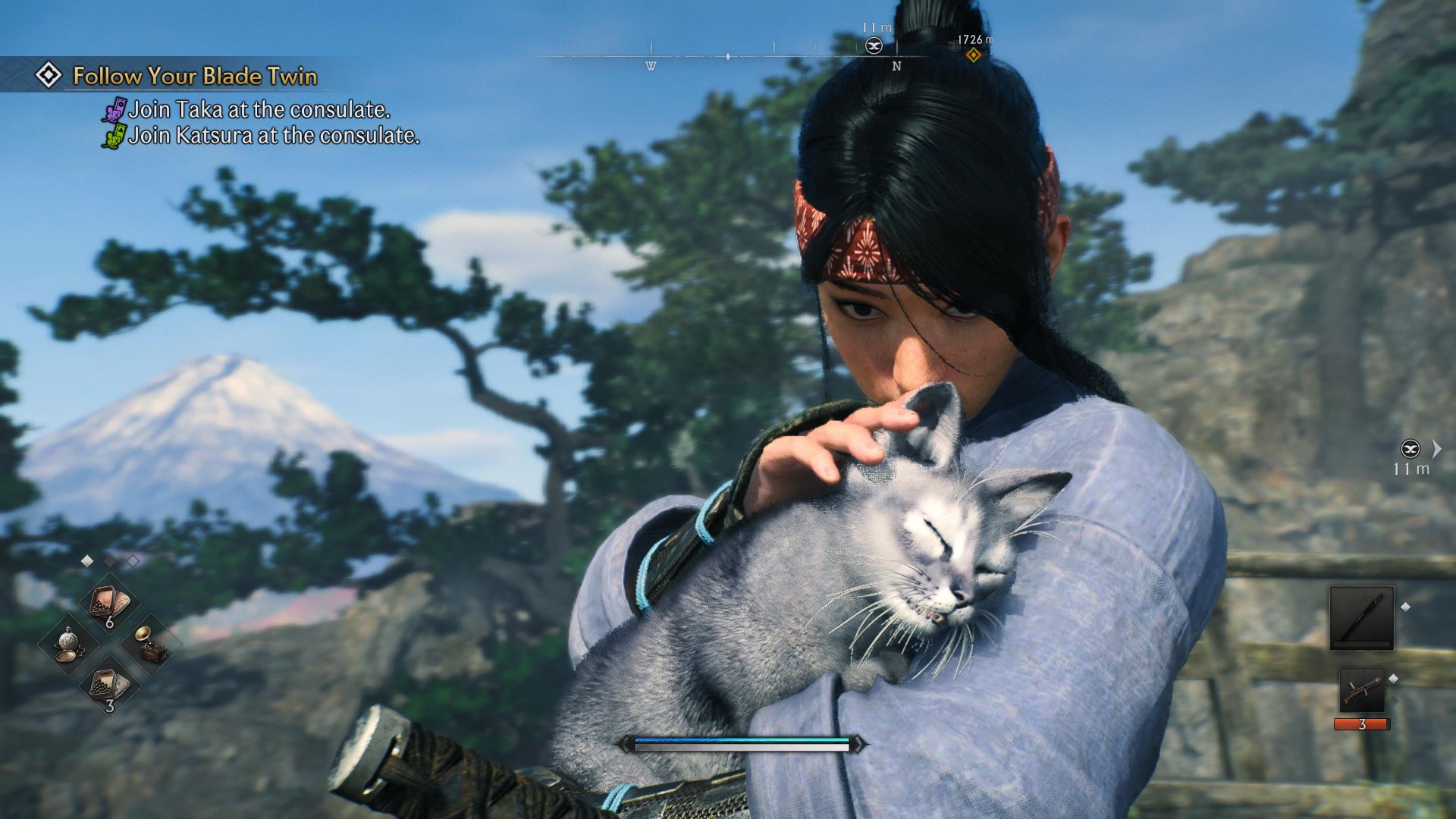
This is what games are made for
Team Ninja moving its hardcore hack and slash stylings to an open world was a fine enough concept on paper, but several missteps that fail to learn from Ubisoft’s blandest empty checklisters make it a bit of a slog
Eschewing the more linear mission-based approach of its other titles, Team Ninja moving its hardcore hack and slash stylings to an open world was a fine enough concept on paper, but several missteps that fail to learn from Ubisoft’s blandest empty checklisters make it a bit of a slog. Once you’re through the opening hours, you are thrust into a gigantic map shrouded in fog and left to your own devices. You can simply pursue the main storyline, or you can engage in an eye-watering amount of time-swallowing side content. This content can include completing side missions to strengthen bonds with the crew you choose to fight alongside, straightening out unruly thugs in hostile areas, finding cats, looting treasure chests, praying at shrines and dabbling in photography. At first I enjoyed going from region to region, settling into a rhythm as I ticked off objectives to strengthen my bonds with the region, sometimes to the point where they’d give me free regional items when I returned to my Longhouse base. There’s a decent sense of variety at the outset, but by the time you’ve tracked down your thirtieth cat after completing your twentieth fetch quest, the fatigue sets in, then you realise you haven’t even finished the first act. One of the most egregious things a game featuring open-world design can do is pummel you with endless busywork; after the first five or so hours you will have seen much of what Rise of the Rōnin has to offer, and then it will ask you to rinse and repeat for many hours more.
A saving grace to this quantity-over-quality side content is that is does feed into your character progression, so if do choose to engage with it (and you aren’t truly forced to) you are usually rewarded pretty well. As you kill enemies and complete missions and objectives you’ll gain Karma that increases your overall level and also nets you skill points. There are your standard skill points and then four different flavours of rare skill points aligning with the core character attributes of Strength, Dexterity, Intellect and Charm. Skills within these trees cost either standard or rare skill points, and picking up two skills in an attribute increases stats linked to them (like raw damage output, luck in enemy drops and ability to stagger enemies). I’m not in love with having five separate upgrade currencies for character progression, but certain open-world activities will allow you to purchase treatises that allow to gain a rare skill point aligned with the skills you want to acquire. For instance, hunting fugitives gives you greater access to Treatises of Strength, whereas tracking down cats for the crazy cat lady in the pleasure district gives you access to Treatises of Charm. All things said and done it’s a clunky upgrade system, and given a lot of the skills were not overly useful for my playstyle (shuriken-based skills were practically useless to me), often you are just trying to acquire the associated stat increase rather than the skill itself.
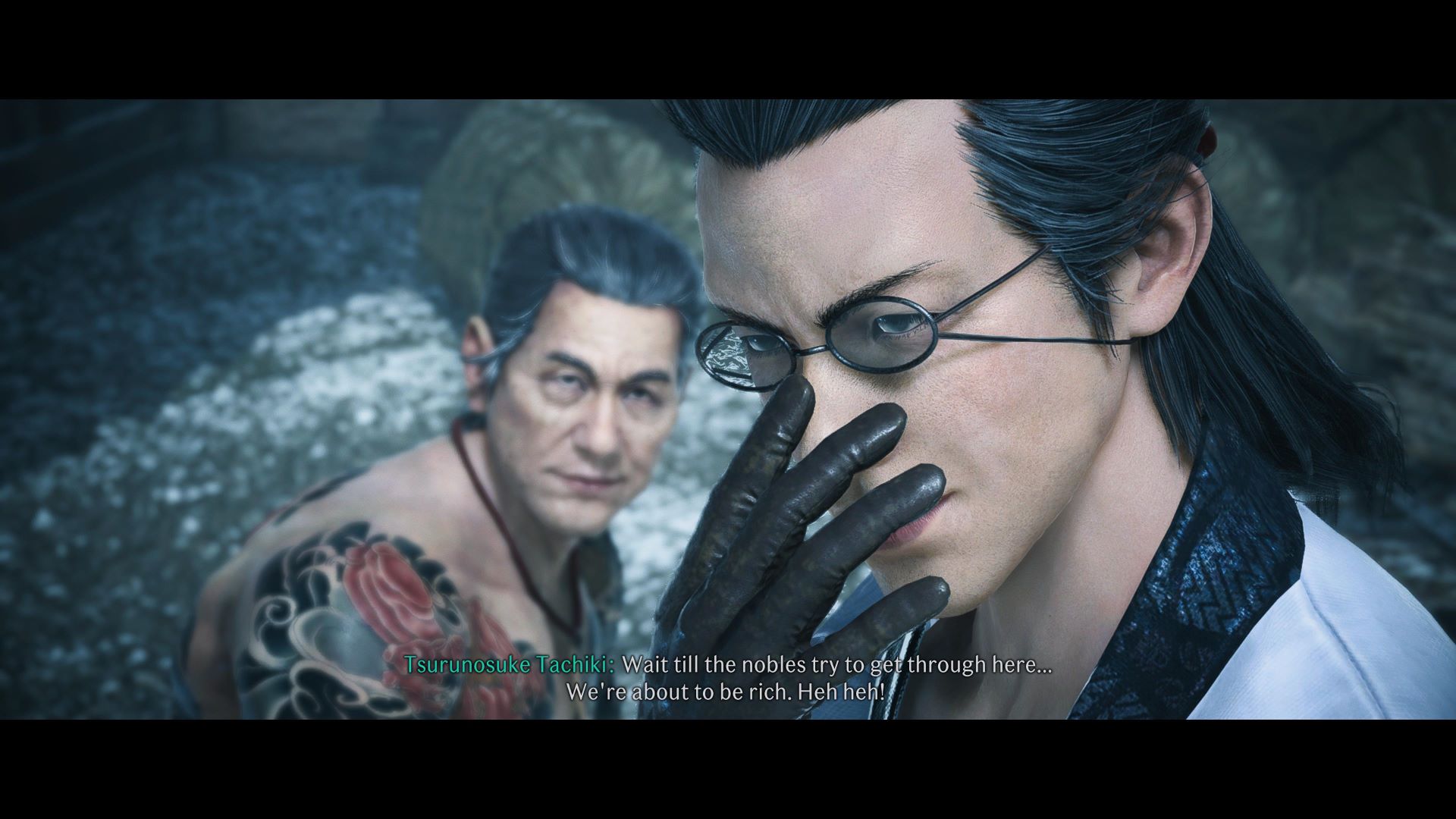
Guys with glasses like this have 100% chance of being up to no good
Talking about rewards, the looter stylings of Nioh and Wo Long are still present in Rise of the Rōnin’s DNA, but I did find myself holding on to weapons and armour for a bit longer comparatively and upgrading them rather than passing them over for the newest shiniest thing. As mentioned, rewards are doled out in heavy doses (you can even raise an army of cats to do missions and retrieve rewards and send out a Shiba Inu to do the same), much of it garbage but all of it prime to be disassembled for upgrade materials or sold for cold hard cash (the loot filter is also world class, making this a painless process). Despite this, there is an odd propensity for the game to reward you with extreme amounts of decorations to deck out the display cases in your Longhouse, but you can’t even really see them when you’re chilling with your buddies between missions anyway.
This brings me to the combat, which is probably the strongest aspect of the experience, but also disappointing in how uninspired and finicky it is. Featuring more or less the same dizzying array of stabby tools that was established in the original Nioh and that has been regurgitated ever since, you have access primarily to a few basic attacks and some more powerful Martial Arts linked to a weapon style. You can assign up to three styles for a given weapon, and you’ll gain more styles as you increase its expertise level or learn them from enemies. Depending on what sort of enemy you’re facing off against, you’ll need to switch styles to maximise your ability to take them on. There’s a visual indicator of which style type is best against which enemy type, but what may have originated as a rock/paper/scissors-inspired system basically goes nowhere. You’ll lock onto an enemy to figure out which style will allow you to get the upper hand, kill them, then do the same with the next enemy. Each style has its own Martial Arts to be memorised, but further to this each has specific button presses to activate longer Martial Arts combos (hold the button down, press the button several times, that sort of thing). Switching between styles constantly I often lost track of which Martial Art was most useful in terms of range and damage, and it felt needless and unrefined as a primary system. All this would be fine if Martial Arts were as devastating as they’re made out to be, but many of them feel anaemic or unsuited to the combat conditions with their long windups or durations that leave you open to attack.
Key to success is keeping an eye on your health and Ki (stamina), as well as that of your opponent. If you run out of stamina and get hit you’ll be stunned and welcome a beatdown from your opponent, and similarly if you whittle their Ki down you’ll be able to perform a powerful finishing move. It’s a system that’s tried and true and entirely functional, but I wish Team Ninja had tried to be a bit more ambitious. They’ve also brought back Nioh’s (excellent) Ki Pulse system, in the form of the incredibly similar Ki Flash mechanic. This allows you to flick the blood off your blade and regain Ki to press the attack, but it feels like a poor man’s Ki Pulse and I often forgot about it. Still familiar but again not overly inspired is the Counterspark manoeuvre, which is a fancy word for a parry. Completely separate to the block button, if you time a Counterspark with an incoming enemy attack, or perform several Countersparks in a row when they’re unleashing a combo, you’ll cause them to panic and enter a state of increased damage susceptibility to both health and maximum Ki. This is supposed to be the time where you unleash a Martial Art, but the panic windows often feel short, especially during boss encounters, so it never feels very satisfying. Effectiveness of Countersparks is also linked to weapon styles matched to your enemy, and if you haven’t got the right style equipped then you may as well be parrying with a piñata. Again, it’s all perfectly functional, just a little humdrum. It bears mentioning that if you don’t get down with Countersparks you are going to find a lot of your encounters very drawn out, so get parrying or die trying.
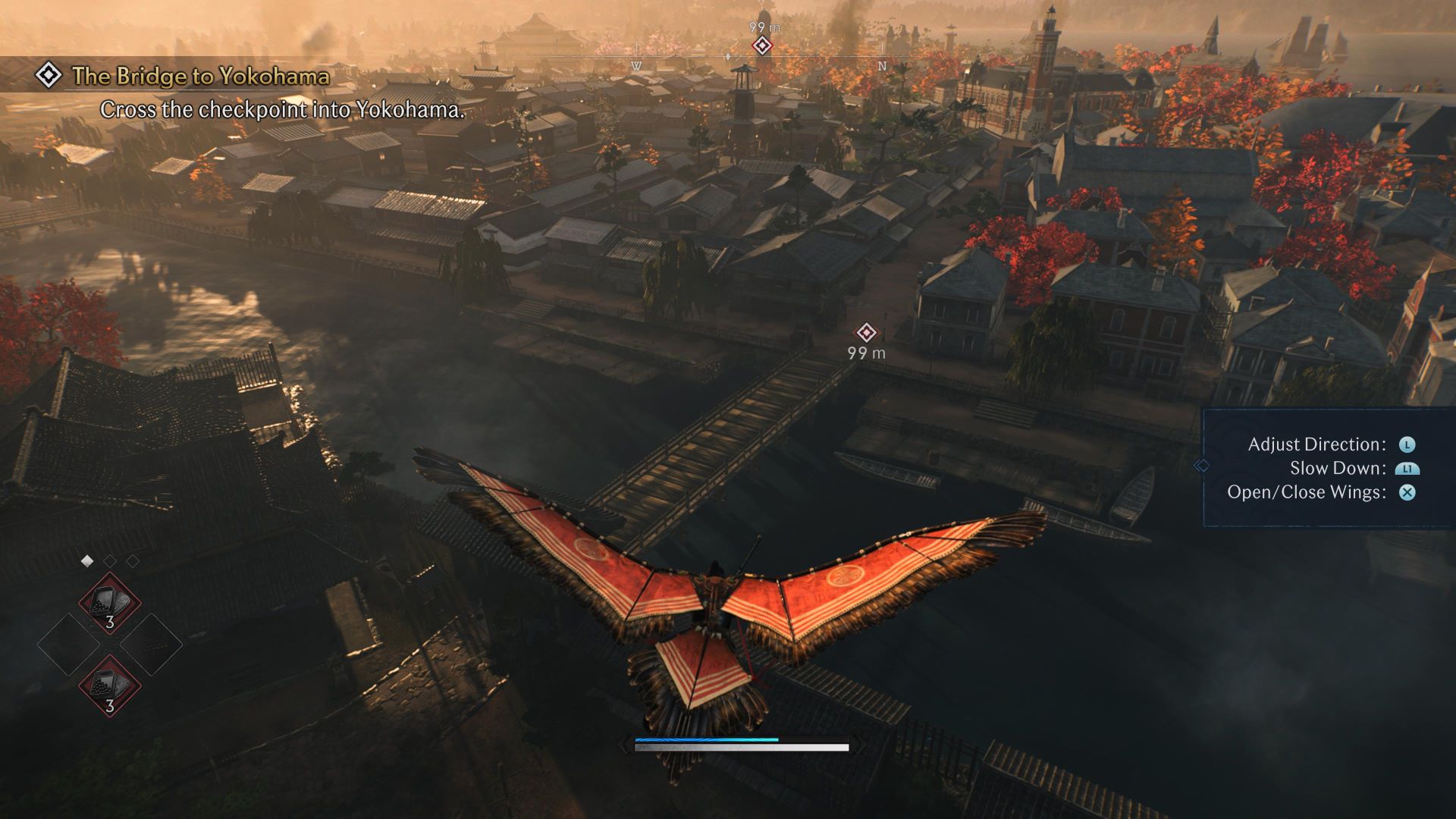
Glide! Glide, you fool!
Sneaking around enemy encampments and performing rooftop assassinations is good fun, and I especially enjoyed skills that enhanced your ability to stab one hapless fool in the back and then terrify his mates watching on
Stealth is also a viable option, but many encounters are custom designed to devolve into a head-to-head fight so a pure stealth build is not on the cards. Sneaking around enemy encampments and performing rooftop assassinations is good fun, and I especially enjoyed skills that enhanced your ability to stab one hapless fool in the back and then terrify his mates watching on. Suitably scared enemies will then cower in fear and wait for the sweet release of death by single-button press. This mildly cheap trick is aided by some fairly awful AI, where the distance they can make out their friends in trouble is similar to my ability to read street signs after a skinful of Guinness on St Patty’s Day at 2am after losing my glasses. It’s the exact same issue present in Wo Long, right down to the relative jankiness of the stealth positioning and general feel, and despite the unintentional comedy it’s not up to snuff. I did love the ranged rifles and bows though, and despite the fact we’ve (again) seen this in every game since Nioh, pulling off a ranged headshot and watching the fireworks while stealthing about the joint never got old.
This aforementioned jankiness unfortunately lends itself to moving around the open world as well, adding an extra layer of annoyance to navigating the sprawling maps. Even if I don’t mention the fact that I had a bug that made me unable to summon a horse to travel long distances across largely sterile environments, the game’s worst crime is not letting you climb on things that are obviously climbable. It’s hard to feel like a badass samurai when I am continually foiled by waist-high fences, or can’t climb a wooden tower that even my seven-year-old son wouldn’t hesitate to conquer. You have a grappling hook, but it can only be used at set grappling points. Often I’d want to get to a roof to survey an encounter or get the drop on some foes, but the roof was inaccessible because the game wanted it to be.
It can also be a pain to navigate more crowded cities with high walls that are arbitrarily too tall to climb, forcing you have to run around the streets looking for a gate or a random grapple point. Assassin’s Creed and Breath of the Wild solved this issue a long time ago by allowing you to clamber up any surface known to man; having the climbing skills of a week-old kitten in certain situations was a source of frequent frustration. You’ll get access to a glider early on, but even that doesn’t really have any sense of dynamism or flow, as flight can’t be sustained for too long as you fall relatively quickly and your Ki drains just as fast. It’s mildly fun to use in assassinations over distance, and it can also be used to skip large parts of missions if you’re looking to exploit their design a la Tenchu Z (‘member Tenchu Z? I ‘member). Other aspects of the game’s design are also exploitable, such as taking companions on missions and swapping between them rapidly to overwhelm enemies who tend to focus solely on the character being controlled. It all speaks to a lack of unified vision between the game’s design and mechanics that is hard to reconcile.
Final Thoughts
There is probably an audience out there that considers gigantic, unending dollops of content as representing bang for your buck, and if this is the case then this game is sure to satisfy. There is a lifetime of content to complete in Rise of the Rōnin, and the looter angle goes some of the way to activate the lizard brain acceptance of this type of experience. But I feel there is probably a large group of people that are equally a little jaded with this design concept. I was there for the honeymoon period of Assassin’s Creed 2 and Far Cry 3, but I think that titles like Elden Ring are proof that we’re allowed to ask for a little more substance over empty checklists. Rise of the Rōnin is expansive, it is technically functional, it is teeming with content, but unfortunately, it is also just a little dull.
Reviewed on PS5 // Review code supplied by publisher
Click here for information on WellPlayed’s review policy and ethics

- Team Ninja
- Sony Interactive Entertainment
- PS5
- March 22, 2024



Kieran is a consummate troll and outspoken detractor of the Uncharted series. He once fought a bear in the Alaskan wilderness while on a spirit quest and has a PhD in organic synthetic chemistry XBL: Shadow0fTheDog PSN: H8_Kill_Destroy





